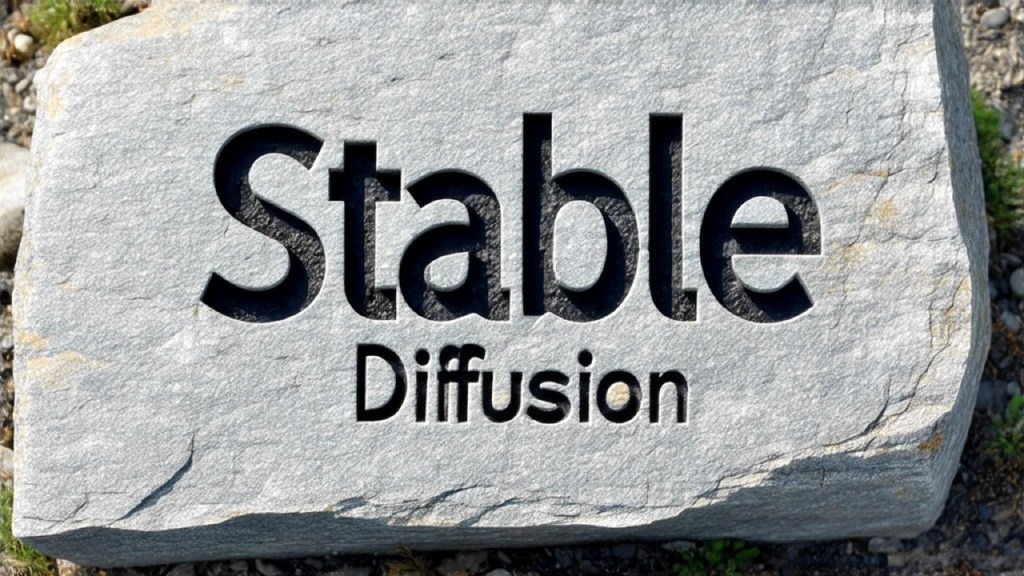
Credit: Image generated by VentureBeat with Stable Diffusion Large 3.5
Join our daily and weekly newsletters for the latest updates and exclusive content on industry-leading AI coverage. Learn More
Creating fancy generative AI images can be fun and useful, but that’s not all enterprises need.
Enterprise text-to-image generation is about more than just creating images. It’s about integration with existing workflows and other enterprise AI tools. That’s a direction that Stability AI, the vendor behind Stable Diffusion, understands.
Today, Stability AI and Amazon Web Services (AWS) jointly announced that Stable Diffusion 3.5 Large is available on the Amazon Bedrock service. AWS is the only public cloud service offering the flagship Stability AI models.
The move isn’t just about simple availability. It’s about integration and a go-to-market strategy that breathes more life into Stability AI’s efforts as the company’s new CEO brings renewed focus to meeting customer needs. Amazon Bedrock provides a single, unified API that allows enterprises to access and use multiple AI models, including Stable Diffusion. That’s important, as AWS’ own research shows that most enterprises use more than one model at a time. It’s an approach that users including the National Football League (NFL) and Stride Learning are already benefiting from.
Stable Diffusion 3.5’s Amazon Bedrock deployment comes as Stability AI faces an increasingly competitive landscape with rivals including Google, Midjourney, Ideogram and Black Forest Labs’ Flux Pro, among others. The company aims to differentiate with more image diversity in terms of style, prompt adherence and enterprise workflows.
“There’s a reason that we’re on AWS,” Prem Akkaraju, CEO of Stability AI, told VentureBeat in an exclusive interview. “It’s because that’s where the developers and the creators are, and we want to bring our tools and our models where they are. Our goal is to empower professional content creators.”
AWS has its own image generation tech, why does it need Stable Diffusion?
The increasingly competitive text-to-image gen AI landscape also includes models from Amazon. At the beginning of December, the Amazon Nova AI model family was announced, including image generation models.
Baskar Sridharan, VP of AI and ML services and infrastructure at AWS told VentureBeat that having multiple text-to-image generation models provides user choice. Amazon Bedrock provides a single unified API for users, so they can choose to deploy any model that’s available on the platform using the same API. Sridharan also noted that AWS provides model evaluation tools that can help enterprises choose the best tool for a specific deployment.
Not surprisingly, Akkaraju sees Stable Diffusion 3.5 as being superior to other models. That’s an assertion that Stability AI has backed up through reported benchmarks on prompt adherence.
“We show in our research that Stable Diffusion 3.5 Large leads the market in prompt adherence, allowing for models to closely follow a given text prompt and really making it the top choice for efficiency and high quality performance,” said Akkaraju.
How enterprises can fit Stable Diffusion into an Amazon Bedrock AI workflow
Stable Diffusion 3.5 large has been available to Stability AI users via the company’s API as well as its Stable Assistant service since late October.
Stability AI doesn’t see any real price difference between using Stable Diffusion on its API or via Amazon Bedrock. The real benefit for enterprise users having Stable Diffusion now available on Amazon Bedrock is the ability to fit into larger, more complex enterprise workflows. Enterprises can benefit from a unified workflow that ties multiple models from different vendors all together with a single API.
It’s an approach that the NFL is already using.
The NFL has an application called “My Cause, My Cleats” that uses Amazon Bedrock to enable a collaborative, community-focused experience for creating custom cleat designs. Sridharan explained that the application uses both Anthropic Claude and Stable Diffusion. The NFL uses Claude to create detailed prompts that understand user preferences and determine what they want. That prompt is then fed into Stable Diffusion to generate the image. The entire process and workflow is done on Amazon Bedrock without the need to jump between different services.
Another organization that has benefitted from the integration is education vendor Stride Learning. The company needed images to support its online learning game Legends Library — a lot of images, up to 1,000 images per minute. Amazon Bedrock provides the infrastructure to support that scale for running Stable Diffusion. Beyond just high-performance scale, there was also a need to secure image generation output. That’s where the Amazon Bedrock Guardrails API fits in. Sridharan noted that with guardrails, Stride Learning is able to meet responsible AI policies for image generation.
“When you do this all using a single API endpoint, it makes it very easy for customers to build these kinds of applications,” said Sridharan.
Stability AI’s eventful 2024 and the road ahead with its new leadership
The Stable Diffusion 3.5 update and availability on Amazon Bedrock caps off an eventful year for Stability AI.
The company’s founder and former CEO Emad Mostaque resigned in March amid concerns about focus and lack of revenue. It took until June for Stability AI to find a permanent replacement with the appointment of Akkaraju.
So far, Akkaraju had been at the helm for a series of model updates. He has also helped to bring in new investors such as Napster founder Sean Parker and advisors including acclaimed director James Cameron in September. Akkaraju comes from a visual effects background and helped make movies including Cameron’s Avatar. In his view, the professional visual media industry will completely transform over the next several years, moving to generated content rather than rendered content.
“It’s a good thing that we work a lot in the creative business, because those are probably some of the most demanding clients that we could ask for,” Akkaraju said.
Looking forward, he joked that Stability AI’s plan is world domination. On a more serious note, though, he expects continued innovation as his company strives to meet real workflow needs.
“We’re going to continue to push the model forward,” said Akkaraju. “You might even see us do another release next year of our next image model and just stay at the top of the wave.”
Daily insights on business use cases with VB Daily
If you want to impress your boss, VB Daily has you covered. We give you the inside scoop on what companies are doing with generative AI, from regulatory shifts to practical deployments, so you can share insights for maximum ROI.
Read our Privacy Policy
Thanks for subscribing. Check out more VB newsletters here.
An error occured.













